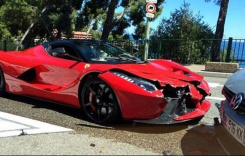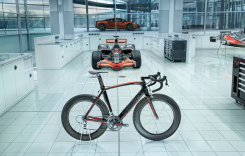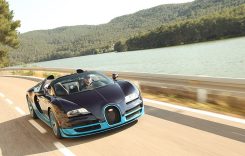The Italian manufacture Beta has been successfully integrating into the off-road American market for several years, proving it has what it takes to win events and championships here in the US and all over the world. Cody Webb rode a two-stroke Beta to the EnduroCross Championship in 2014, and Beta’s dealership network is now over 100 dealers strong. You might remember Beta way back when they were powered by KTM engines, but those days are long gone and everything on a Beta is made by Beta. And if you’re a dirt bike rider that’s never heard of Beta, it’s ok to crawl out from under your rock now. Beta is the real deal and is getting bigger and better at an exponential rate.
The introduction of electronic oil injection headlines the updates to the 2016 Beta 300 RR two-stroke enduro. The system debuted on the 2015 Beta XTrainer and thanks to its success it is now on the 300 RR as well. The two-stroke oil is stored in a tank under the seat (easy to remove with just a push of a button) and holds 12 ounces of oil. The oil injection is managed by an ECU, which feeds a precise amount of oil into the system

based on rpm and engine load, measured through the throttle position system (TPS). The ratio varies from 32:1 to 100:1, depending on the demands of the rider and the terrain. The oil injection system puts out a lot less tail pipe smoke and uses only as much oil as needed. To help keep the system idiot proof, two warning lights are built into the digital odometer. One notifies the rider if the oil tank level becomes too low, while the second red light warns of system failure. General ECU changes for 2016 were aimed increased performance in the upper rpms and to improve the already awesome bottom-end power and response.

For 2016 the 48mm Sachs fork, which was co-developed by the Beta factory engineering team, received revisions, allowing more oil to flow through the base valve.The spring guides were also redesigned to provide less friction and noise. The double-cradle style frame got a redesigned top shock mount for improved feel and comfort. The airbox has improved drainage, helping any water that gets in to airbox escape before being sucked into the engine. The Beta 300 RR is sold as a closed-course competition bike and comes equipped with an FMF nickel-plated pipe and FMF muffler, lacking a spark arrestor. We quickly replaced it with an FMF unit containing a sparky to ride public lands. The 300 RR also has an Allen wrench and 8mm socket hidden under the seat that helps the rider gain access to a tool stash area behind the left side panel and airbox.

Lug or Rev
The electric start Beta 300 RR off-road engine is everything you could want from a 300cc two-stroke. It lugs incredibly low, then pulls smoothly into a very impressive mid-range and keeps running strong into the high rpms. It doesn’t rev as high and as fast as a 250 two-stroke, but it provides plenty of top-end rev and power to conquer big hills. You can short shift and lug the 300 all day, or let it rev a little, it provides great response and excitement. Thanks to the oil injection it also doesn’t load up after long periods of low rpm riding. Every test rider, both novice and expert loved the power delivery and its versatility.
Like the KTM two-stroke engine it so closely resembles, the Beta powervalve is adjustable with just an Allen wrench and we suggest doing so, as it drastically changes the power delivery. A little adjustment in or out from stock mellows out the hit or wakes it up, depending on what the conditions require or what you as a rider want. It is the easiest and quickest way to tune the power delivery without spending a dollar, unless you don’t own an Allen wrench, then you’ll have to buy one.
Hardcore off-road guys know how awesome a good 300 two-stroke is for trail riding and tough terrain riding. They are light, simple and don’t flame out like a four-stroke. Look at any extreme enduro event and 99% of riders are on two-strokes, they just make sense when the riding gets nasty. With an engine this easy to ride everywhere it’s hard not to go the two-stroke route for all off-road riding.
The 300 RR transmission and stock gearing works well overall. Bigger or heavier riders might go up a tooth or two in the back to help close the gaps between gears, especially if they’re sticking to slower, tighter terrain, don’t need crazy top speeds and like to use second and third gear a lot.
With hundreds of miles under the Beta’s tires we’ve come to love the oil injection system. Like any new system, we were a bit skeptical at first, but it works exceptionally well. As far as we can tell the mixtures varies between its claimed 32:1 to 100:1 ratios. Beta recommends using Motul 710 2 stroke injector oil and straight 91 octane gas, so we followed those instructions. We rode the 300 RR a day at a GP style motocross track under heavy load and high rpms, using up quite a bit of the injector oil with a full tank of gas. We calculated that it was mixing near 32:1. We’ve also been on 30-mile single track trail rides and only saw the level of oil in the tank drop by a fraction of an inch. The system does as Beta claims, correctly adjusts the ratio depending on the load and needs of the engine. Under normal riding conditions we easily got two to three tanks of gas out of one tank of injector oil, using way less pre-mix than if we had been doing the premixing ourselves.

Trail Savvy
Sachs isn’t exactly a household name in America when it comes to suspension. The good news is that it improves every year and the changes for the fork on the 2016 Beta improved overall performance. The Sachs fork and shock settings work well for a wide range of riders and skill levels in true off-road conditions. This is a trail bike with suspension tuned for that, which means it is super plush, especially after ten hours of break in. It will hold up decently to bigger hits at moderate speed but its true calling is floating over rocks, roots and logs out on the trail. We ran 105mm sag and about 35mm of free sag to keep the front end from feeling low and diving under braking and down hills. The 300 RR already feels like it has a long wheelbase so going too low in the back makes it feel a little choppered out and hampers turning performance. The 2016 Beta 300 RR is all about trail riding and technical terrain, it isn’t a race bike. Aggressive and fast riders will want more damping and, possibly, stiffer springs. Adding a steering damper to calm the two-stroke jitters is always a great option as well.
Another major component in the handling of any bike is the tires. The stock Michelin enduro rubber offers up decent traction in dry and rocky conditions. The vertically challenged knobs on the back tire don’t perform well in sand, mud or snow. We ran heavy duty tubes and a little less air pressure in the back, letting the big balloon like tire flex and hook up well. Running only 9–10psi out back offers some great traction, but the tradeoff is an increase in the chances of a pinch flat. We only run low pressure when we know the ride is slow and we can float like a butterfly over objects that have the potential to pinch the tube.
The most embraced attribute of a two-stroke off-road bike is that it is lighter than its four-stroke brother. While the Beta 300 RR isn’t a feather on the scale, weighing 250 with a full tank of gas, it doesn’t feel that heavy out on the trail. The long and stable feel of the chassis provides riders with confidence, a welcome trait in rocky, rough terrain. Cornering is easy and the RR flows around a curve with precision. Thanks to the overall stable, long feel it doesn’t stand up early in corners or deflect offline easily. The plush suspension and luggable engine mean conquering gnarly terrain is fun rather than treacherous.
The seat height is comfortable and low enough to allow average riders the chance to touch the ground when needed. The brakes are great, requiring minimal finger pressure to grind the front wheel to a halt. Lighting is enough to get you back in case of an emergency if it’s dark, but nothing you’d chose to go night riding with. We’d love if it came with some handguards, but chances are high riders have a style they love and will install what they need before burning off into the dirt.









